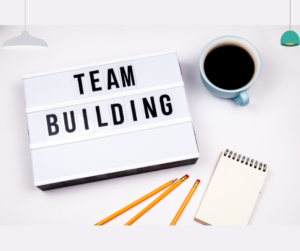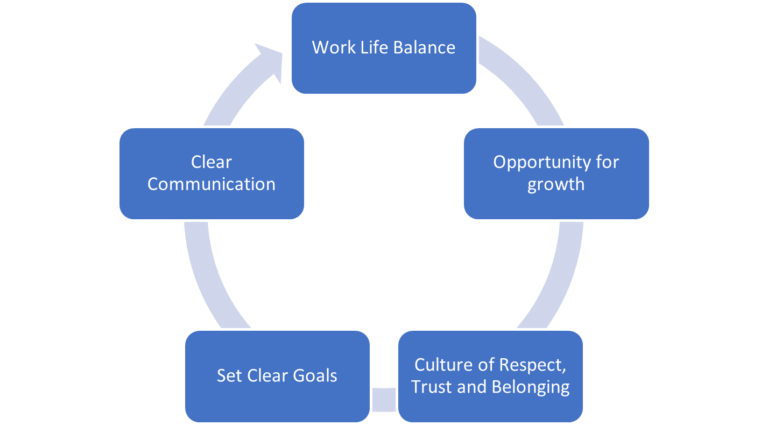
Teams are becoming a key tool for organizing work in today’s corporate world. Team building activities can range from icebreaker games to problem-solving challenges, promoting teamwork and problem-solving skills. The goal is to create a positive and supportive team culture, where members understand each other’s strengths and weaknesses, leading to improved productivity and morale. Effective team building can enhance communication, boost motivation, and contribute to a more enjoyable and efficient working environment.
Teams in organizations are essential for collaboration, pooling diverse skills, sharing responsibilities, and achieving collective goals. They foster innovation, enhance problem-solving, and provide mutual support, ultimately improving overall efficiency and productivity.
Understanding the why; the essence of team building
Crafting a thriving and productive work environment involves focusing on essential elements that contribute to success. Whether you’re an employee or an employer, understanding and prioritizing these key factors can significantly enhance your overall workplace experience
Key Elements for Success in the Workplace

Work Life Balance
Imagine life as a seesaw. On one side, you’ve got work – your job, responsibilities, and deadlines. On the other side, there’s your personal life – family, friends, hobbies, and relaxation. Work-life balance is about making sure neither side is constantly up in the air. It’s finding that sweet spot where you can handle your job well and still have time for things that make you smile. It’s like keeping both ends of the seesaw steady so you don’t feel overwhelmed and can enjoy both work and life.

How to balance work and life?
"Prioritize tasks, set boundaries, and schedule downtime to achieve a harmonious work-life balance. Quality rest enhances productivity, fostering a healthier, more fulfilling lifestyle."

Opportunity for Growth
Opportunity for growth is like a stepping stone to becoming a better version of yourself. It could be a chance to learn something new, take on more responsibilities at work, or explore different aspects of your life. Embracing these opportunities can lead to personal and professional development, helping you reach new heights and uncover untapped potentials. It's about being open to change, challenges, and learning experiences that can propel you forward on your journey.

Culture of Respect, Trust and Belonging
Picture a workplace or community where everyone is treated nicely, trusted, and feels like they truly belong. In this setting, people respect each other's ideas, trust that everyone is doing their best, and make everyone feel included and valued. It's like being part of a supportive team or group where everyone feels comfortable and appreciated, making the environment a happy and positive place to be.

Set Clear Goals
Setting clear goals means knowing exactly what you want to achieve. It's like having a roadmap that guides you towards your destination. Clear goals help you focus, stay organized, and measure your progress. Whether in work or life, having well-defined goals gives you a sense of direction, making it easier to make decisions and stay motivated along the way.

Clear Communication
Clear communication is like using a clear map to explain your ideas or thoughts. It means expressing yourself in a way that others easily understand. When communication is clear, there's less room for confusion or misunderstandings. It involves using simple language, being concise, and making sure your message is received as intended. Just like a well-written note or a straightforward conversation, clear communication helps everyone stay on the same page and fosters better understanding among people.
Steps to Build a Successful Team
Learning from Failure:
Encourage a culture where failures are viewed as opportunities for learning and improvement. Analysing setbacks as a team fosters resilience and a growth mindset.
Recognition and Rewards:
Acknowledge and appreciate team members for their hard work and achievements. This can be through formal recognition programs, shout-outs in meetings, or small gestures of appreciation.
Positive Team Culture:
Encourage a positive and inclusive team culture that celebrates achievements, encourages collaboration, and supports individual growth. Team-building activities, both inside and outside the workplace, can contribute to building strong interpersonal connections.
Effective Communication:
Establish open and transparent communication channels to foster a collaborative environment and prevent misunderstandings.
Conclusion
Team building is a vital aspect of fostering collaboration, communication, and trust within any organization. Through engaging activities and shared experiences, teams can strengthen their bonds, enhance productivity, and achieve common goals more effectively. By prioritizing team building, organizations can create a positive work environment where employees feel valued, supported, and motivated to succeed together.
Amazing content …